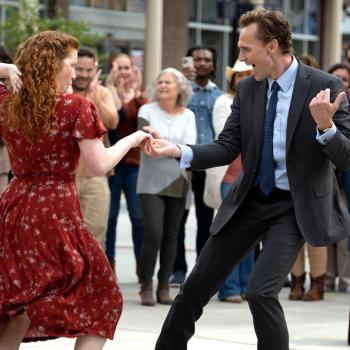There are some stories that, while not dramatic or grand or full of explosions and people with superpowers, can awaken minds and shatter souls.
I’ve told a version of this little story to many people — orthodox Catholics, lapsed Catholics, non-Catholics — and it never fails to get the same wide-eyed, awestruck response. There are few things more powerful than reminding someone of who he or she really is:
A story from the life of St. Francis of Assisi illustrates how the awareness of a priest’s hands can help bring about a deeper purification in the heart. The saint was close to the end of his life, unable to walk and suffering from an eye disease and the stigmata. As he was brought through a region, some people from a nearby town came to ask for his help with their parish priest. They had discovered that their priest was involved in a scandalous relationship with a woman of that town. The saint was brought to the town and placed before the priest in front of everyone. They thought that the saint would upbraid the fallen priest. St. Francis instead fell to his knees, took the priest’s hands into his own stigmatized hands, kissed them and said, “All I know and all I want to know is that these hands give me Jesus.” It was said that the priest was converted.
It’s easy to look away, to pretend not to see things in the world. The priest looked at his hands every day, watched them bring Christ to his people and watched them commit sin. What Francis did was remind him that the consecration and the sin were both things that he did, but that his priestly duties were who he was.
As the Planned Parenthood scandal continues to unfold — centered on videos depicting officials of the organization casually discussing the disposition of the vital organs and other body parts of aborted babies — we are reminded that whatever sort of a nation we think we are, this is the nation that we really are.
We’re a nation that has enshrined abortion in law and uses taxpayer dollars to support the major provider of it. As we look down at our hands, what do we see?
And once you’ve seen, you can’t unsee. This is how columnist Ross Douthat begins his latest op-ed in The New York Times:
IN an essay in his 1976 collection, “Mortal Lessons,” the physician Richard Selzer describes a strange suburban scene. People go outside in the morning in his neighborhood, after the garbage trucks have passed, and find “a foreignness upon the pavement,” a softness underfoot.
Looking down, Selzer first thinks he sees oversize baby birds, then rubber baby dolls, until the realization comes that the street is littered with the tiny, naked, all-too-human bodies of aborted fetuses.
Later, the local hospital director speaks to Selzer, trying to impose order on the grisly scene. It was an accident, of course: The tiny corpses were accidentally “mixed up with the other debris” instead of being incinerated or interred. “It is not an everyday occurrence. Once in a lifetime,’ he says.
And Selzer tries to nod along: “Now you see. It is orderly. It is sensible. The world is not mad. This is still a civilized society…
“But just this once, you know it isn’t. You saw, and you know.”
The advantages and pleasures our society offers are sometimes bought at a terrible price, and too often it’s children who pay it. They are victims of not just abortion, but abuse, exploitation, neglect and indifference.
Individuals commit these sins against children, but all of us share in some way in the guilt.
Perhaps no one better encapsulated this concept than author Ursula K. LeGuin, in her short story, “Those Who Walk Away From Omelas.”
I don’t want to tell you anything about it. I just want you to read it. And once you’ve read, I want you to share it.
Click here to find it as a downloadable PDF.
Don’t miss a thing: head over to my other home at CatholicVote and like my Facebook page.














